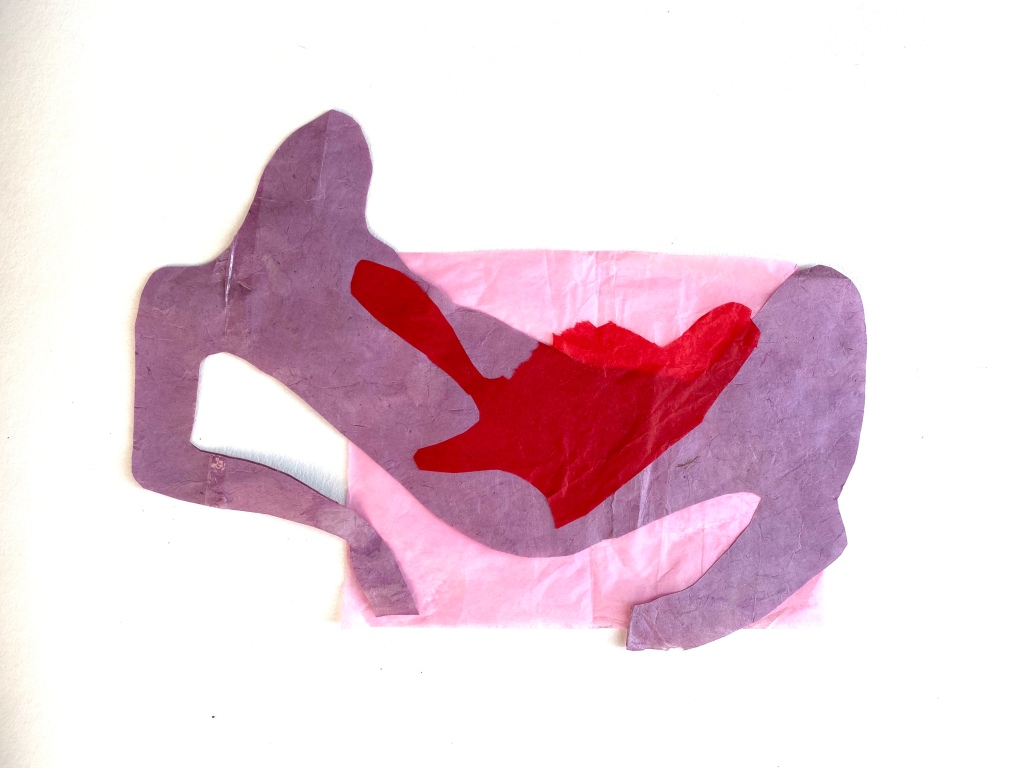
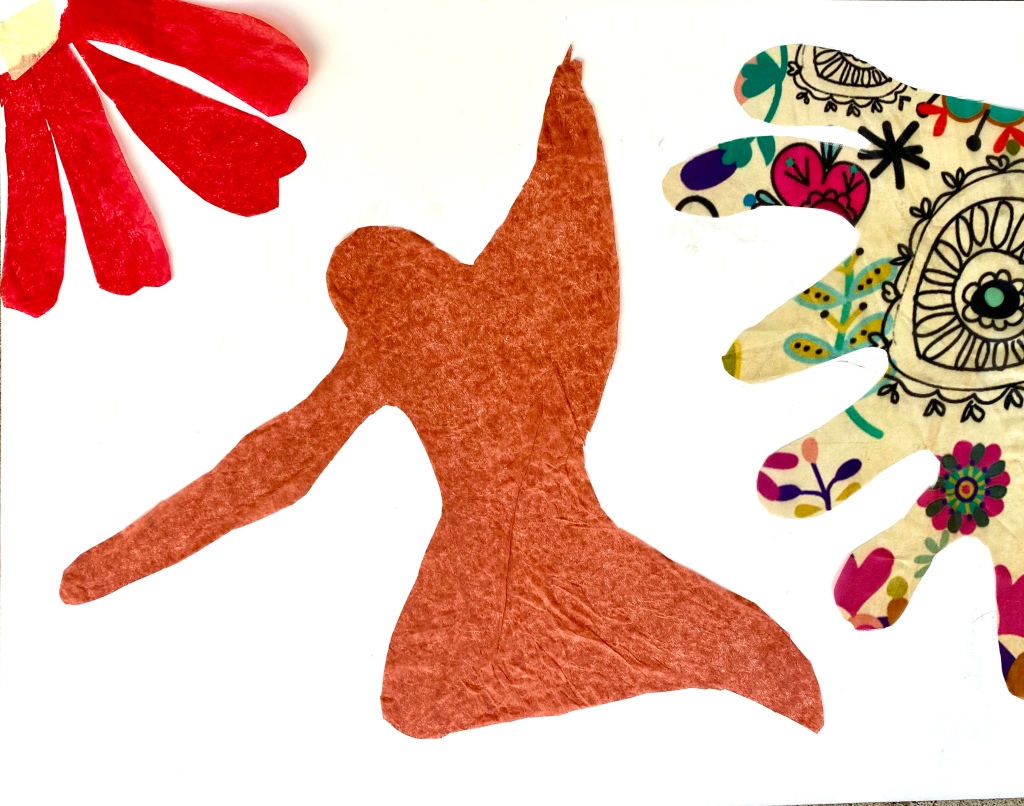
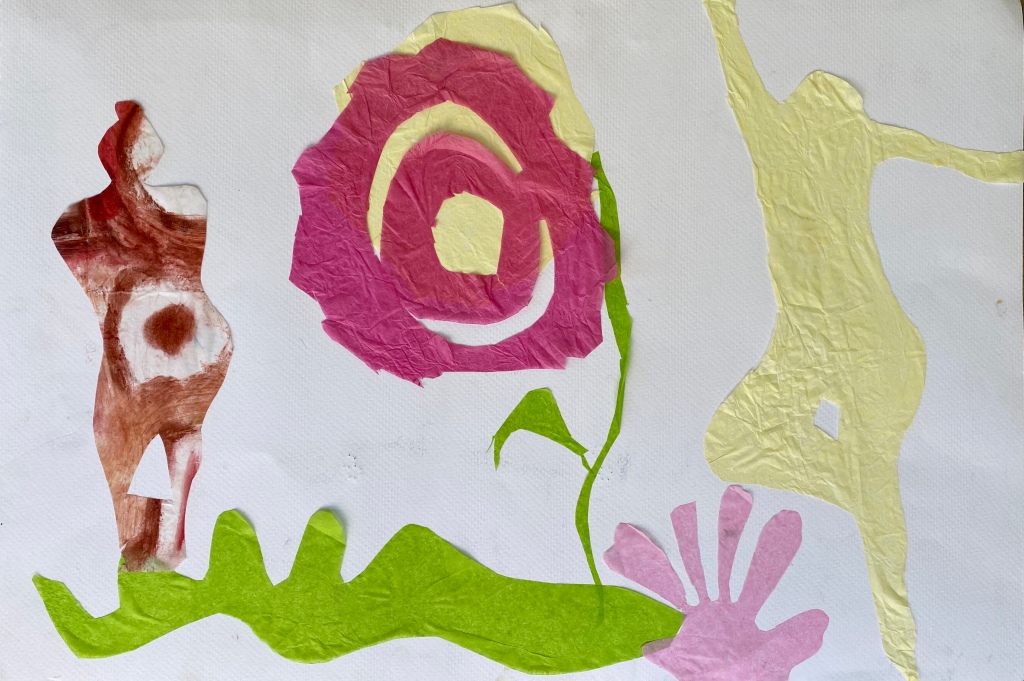
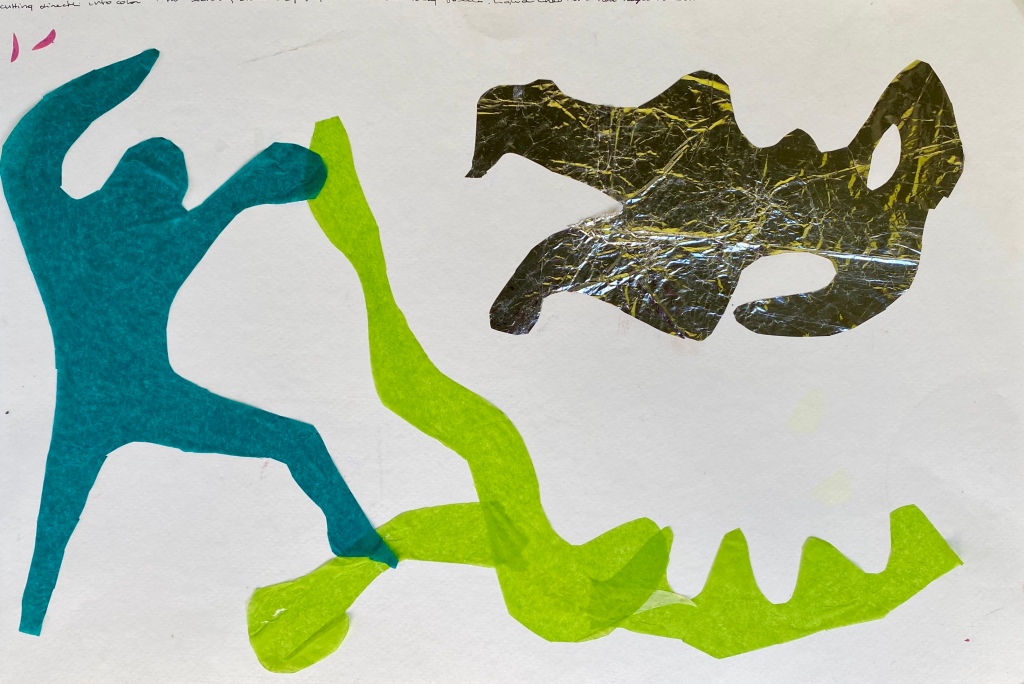
“Some things, like the gift of sacred idleness, are completely impractical, yet necessary”.
Paraphrasing from “Simple Abundance: A Daybook of Comfort and Joy” by Sarah Ban Breathnach
Posted in art,poetry,writing, tagged collage, Matisse, Quotes on November 5, 2020| 2 Comments »




“Some things, like the gift of sacred idleness, are completely impractical, yet necessary”.
Paraphrasing from “Simple Abundance: A Daybook of Comfort and Joy” by Sarah Ban Breathnach
Posted in art,poetry,writing, Photography, Quotes, tagged come alive, fernanda pivano, Flylady, lessons, Life of an artist, musing, night, Quotes, time on March 15, 2015| Leave a Comment »
Not knowing where to start, we can start from here, from tonight.
Of all the nights, why not tonight?
I picked up my electronic pen, my fingertips, so many times, only to put it/them back in the drawer.
Fragile, breakable souls…we get overwhelmed so easily…we take so much time to process.
Life is always a zero or thousand percent experience to an artist…we know no ‘efficiency’ or safety…and we crave intensity because, for some of us, that is what art and life is made of.
I tend to store moments, spaces, bodies, souls, words, in mental collages as white-hot and dangerous as rocket turbines.
Fuel for the winters of life, emotions that could only be collected in tranquility.
Yet, what if life moves so fast that there is no time to process it through artwork?
The real life of absorbing work, passionate friends, culture, travel, service, relationships, often happens faster than art, words, and poetry…and demands to be lived with our heart on ‘fingertips and tongues’, as Fernanda Pivano writes.
To be an artist, which is never a choice –or at least not a choice than any sane person would make– requires that not only we live life at its fullest, but that we show up to our craft, that we transform the energy of our life, entropically, into artwork.
As soon as things get a little off- balance, that is, too much time passes without creative outputs, the feeling of being overwhelmed begins. Because the storing of information and experiences that will translate into artwork never stops in an artist.
Sacrifices need to be made…time-outs need to take place for the alchemical crafting of life into art, yet that doesn’t/can’t always happen.
Where does one start, then?
Digging through more than a year’s worth of raw, brilliant life, stupendous falls and magnificent failures….when does collecting become hoarding?
When there is no sharing. Most of us are compelled ( condemned? ) to offer up our work. These words, these ideas, these posts, need to leave my mind so that I and them can be set free.
Then there is time, and guilt.
Time away from the craft that is transformed into guilt.
This is an evil cycle for artists, made worst with each passing day. It is a sort of paralysis, a mental block due not to lack of ideas, but due to too many — coupled with the most peculiar fear of success.
And muses, muses inspire, but also distract, and disrupt. It is in the nature of muses and we won’t fault them.
How many times have I promised myself the return of myself – in full glory? Is this it?
Then I read an introduction to an art exhibit in Rome, something about the concept of ‘taking time’ — the fact that art is also made of the fallow time it took to process life, that the in-between time of silence is an intrinsic part of evolutionary works….
A work of art is not only what is visible to the eye, but the result of a complex journey, of going-away and re-compositions
The exhibit, which I will never see and exists as a sort of Borgesian riddle
( I have the instructions, yet no machine; this being the whole point of the instructions) aims to
“underline the value, priceless, of that golden moment which is the possibility of producing a kind of thought that looks at art , without the anxiety of having to furnish a product. These works ( we will never see them, therefore we can imagine them as we wish ) have a baggage full of the process that matured and realized them. It is the difference between looking and seeing.”
In these two years, I learned the importance of chaos, and that one must respect it and love it as an akward child.
I learned of nesting, and of working on a home as a temple.
Without order, at least for me, there can be no art, just escapism.
I learned I solve myself by working on external harmony.
(Or maybe I was just avoiding myself, and procrastinating.)
I learned patience, which is not burning anymore, but peaceful. I learned that forgiveness is part of the creative process. And so is letting go.
I learned I am not reading enough books.
I learned that, when I am too tired to do anything else, and sleep does not come, words are there, images are there…and I can go into my vaults and cellars and create something to share with you.
I can write.
It is not academic writing –that will come in time–but something that likes to combines poetic prose or poetry with images. This is the sound my soul would make, if it could sing.
This output brings me immeasurable joy. More importantly, it keeps me alive.
I was recently, and repeatedly, reminded of the quote :
Find what brings you alive,
and do it.
The truth is that without showing up here, my soul atrophies. Simply put, it has become a matter of survival.
A lady I know and love likes to say, in matters of home organization,
You are not behind! I don’t want you to try to catch up;
I just want you to jump in where we are. O.K.?
So I will start from where I am tonight, and work my way back, back through these past two years in images. As I said, I can offer more words and photographs than drawings and paintings at this point.
I decided to stop beating myself up for this.
I will jump in where we are too, with current (attempts at) drawn and painted work, back to using my hands everyday.
Consider this my artistic physical therapy after the most wonderful accidents.
Posted in architecture, art, art,poetry,writing, Artuesdays, Books, Coffee, Design, Graphic Design, Making, Paper Goods, Poetry, Portfolio of Work, School Work, tagged advanced presentation, architecture school, art, binding, bookmaking, Coffee, DIY, mini books, projects, Quotes, school, sketchbooks, small books on December 24, 2013| 2 Comments »
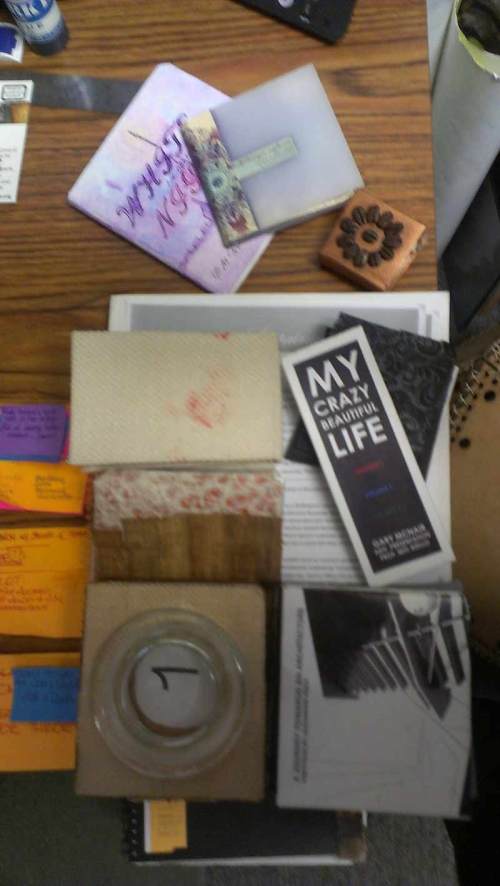
Above, my Christmas presents from my students.
The ‘one hundred small books’ were a project for the Advanced Presentation course I taught.
To start the conversation on small scale binding, I brought some of my mini books to show.
How did I end up with these? 😛
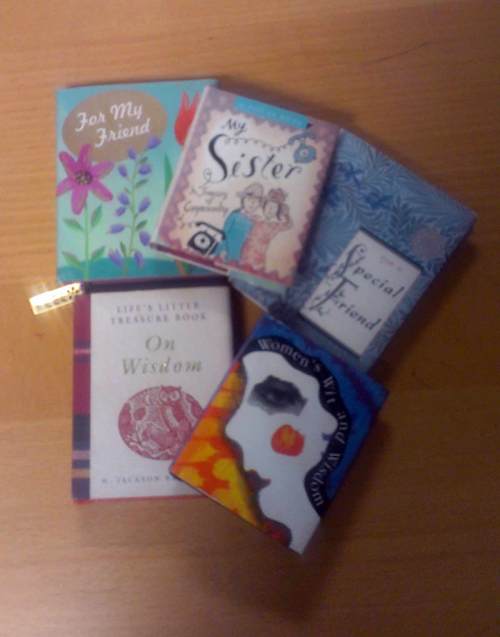
My students could choose their own narrative and learned how to bind books using different techniques and materials.
We covered layout through a discussion on portfolio graphics and blog and website design –and used some color palette tools–
so for the final project I wanted to do something different and strange, inspired by an artist in the 70’s who created one hundred little books.
Some of them are portfolios, some poetry, photography…a couple are on love and music 🙂
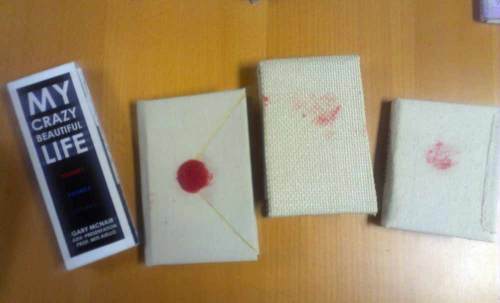
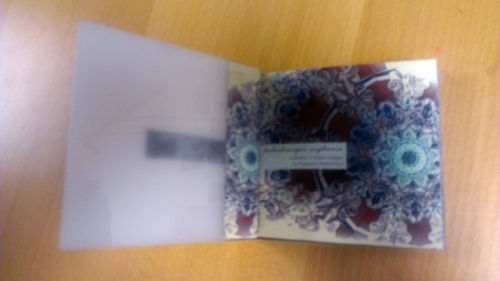
There is even Dostoevsky’s novella ‘White Night’ and a book entirely on coffee and quotes, both done by Anastasia, a fellow artist (someone knows me!).
You can follow her beautiful work here.
I will post more pages from the little books once school resumes. I also (shocking, I know) have a little book on coffee quotes at home, bought in Italy few Christmases ago. I’ve been meaning to write a post about it, and now I will share it with you – and Anastasia 🙂
Also there were lots and lots of sketchbooks from my History of Architecture students (!).
I. love. them.
Before I go (get coffee), some coffee quotes from my little coffee book:
If asked: ‘How do you take your coffee’?
I reply : ‘Very Seriously’Unknown
Coffee is a language in itselfDrink coffee…
Then think.
Unknown
Coffee is the favorite drinkof the civilized world.
Thomas Jefferson
Black as night,Sweet as sin.
Neil Gaiman ‘Anansi Boys’
Deja Brew:The feeling you’ve had
this coffee before.
Unknown Coffee
It is inhumane, in my opinion, to force people who have a genuine medical need for coffee towait in line behind people who apparently view it as some kind of recreational activity.
Dave Barry
Black as the Devil,Hot as Hell,
Pure as an Angel,
Sweet as Love.
Posted in art,poetry,writing, tagged film, Manhattan, Photography, Quotes, Woody Allen on November 1, 2013| 3 Comments »
Why is life worth living? It’s a very good question. Um… Well, There are certain things I guess that make it worthwhile. uh… Like what… okay… um… For me, uh… ooh… I would say… what, Groucho Marx, to name one thing… uh… um… and Wilie Mays… and um… the 2nd movement of the Jupiter Symphony… and um… Louis Armstrong, recording of Potato Head Blues… um… Swedish movies, naturally… Sentimental Education by Flaubert… uh… Marlon Brando, Frank Sinatra… um… those incredible Apples and Pears by Cezanne… uh… the crabs at Sam Wo’s… uh… Tracy’s face.
From Manhattan
Posted in ArchistDesign | Studio, Architectural Photography, Architecture, Art Show, art,poetry,writing, Books, digital collage, photography, writing, architecture, Habana Diaries, History of Architecture, Le flâneur, Lectures, Music, Photography, photography, Quotes, Reading, Research, School Work, Traveling, tagged Alejo Carpentier, Architectural Styles, Architecture, Centro Habana, city of colums, cuba, Cuban eclecticism, El Malecon, Federico Lorca, graham greene, Habana, Habana Vieja, Havana, havana as a rose, images, La Habana, literary quotes, Lost CIty, photographs, Photography, Quotes, ruins, urban design, Vedado on April 20, 2012| 1 Comment »

‘Habana is very much like a rose,’ said Fico Fellove in the movie The Lost City,
‘it has petals and it has thorns…so it depends on how you grab it.
But in the end it always grabs you.’
“One of the most beautiful cities in the world. You see it with your heart.”
Enrique Nunez Del Valle, Paladar Owner
Habana’s real essence is so difficult to pin down. Plenty of writers have had a try, though; Cuban intellectual Alejo Carpentier nicknamed Habana the ‘city of columns,’ Federico Llorca declared that he had spent the best days of his life there and Graham Greene concluded that Habana was a city where ‘anything was possible.’
…
ARCHITECTURE
Habana is, without doubt, one of the most attractive and architecturally diverse cities in the world. Shaped by a colorful colonial history and embellished by myriad foreign influences from as far afield as Italy and Morocco, the Cuban capital gracefully combines Mudéjar, baroque, neoclassical, art nouveau, art deco and modernist architectural styles into a visually striking whole.
But it’s not all sweeping vistas and tree-lined boulevards. Habana doesn’t have the architectural uniformity of Paris or the instant knock-out appeal of Rome. Indeed, two decades of economic austerity has meant many of the city’s finest buildings have been left to festering an advanced state of dilapidation. Furthermore, attempting to classify Habana’s houses,palaces, churches and forts as a single architectural entity is extremely difficult.
Cuban building – rather like its music – is unusually diverse. Blending Spanish colonial with French belle epoque, and Italian Renaissance with Gaudi-esque art nouveau, the over-riding picture is often one of eclecticism run wild.
Brendan Sainsbury
Posted in art, Calabria Diaries, Drawing, F R A G M E N T S, Ink, Poetry, Quotes, sketching, Writing, tagged Dali, Drawing, fisherman, fragments, Lao Tzu. Wisdom, pescatore, poem, poems about a cashmere wrap, Quotes, Saul Bellow, visual poetry on December 15, 2011| Leave a Comment »
The cashmere wrap finally arrived in the mail
so much weighs on this stole
‘opportunity a thief makes’
he said before giving me homework
“A great deal of intelligence can be invested in ignorance when the need for illusion is deep”
A lot weighs on this stole:
conversation is rippled with diamonds
they tumble , heavy, they are words, quotes
…out of the mundane…
a pearl – grasp it and keep it.
Wisdom is the only jewelry I wear this season
and my greediness awaits
He who grasps more than he can hold, would be better without any.
If a house is crammed with treasures of gold and jade,
it will be impossible to guard them all.
Did you hear the sound of wisdom, Heart?
The message you sought.
My only wealth is my memory.
Like a mendicant I gather precious words,
fragments of light that I bring back,
puzzles I spend days composing.
– You, collector of spirit, feeder of souls.
Everyone wants to go to Heaven, no-one wants to die.
The falcon, scarred wing, alighted the sill.
– the magpies, once they have caught the prey,
lose interest
and look around for the next creature to pursue-
grasp their message
Catch leaves in the wind
Heaven is simple:
Posted in art,poetry,writing, Cures for the Nothing, Quotes, Writing, tagged amsterdam, bali, Blogging, christmas, Eat Pray Love, india, Italy, Quotes, sarah gilbert, schiphol airport, writing on December 25, 2010| 2 Comments »
Americans know entertainment, but they don’t know pleasure.
In Italy we have the expression ‘dolce far niente’ ; the sweetness of doing nothing.
Maybe you are a woman in search of a word.
Ruin is a gift. Ruin leads to transformation and evolution.
Bali:
Learn to see with your heart, not with your eyes, or with your head.
Meditate while smiling. Smile not just with your face, smile with your head. Smile even with your liver.
India:
You don’t have to be married or have children to have a family.
You have to learn to select your thoughts everyday, just as you select the clothes you are going to wear everyday.
God dwells within me. As me.
To live is to trust.
What if you had the capacity one day to love the whole world?
Here is to new beginnings without old nonsenses.
Here is to lots of art and growth (and lots of good things to share)
Posted in Architecture, art, art,poetry,writing, Books, Cures for the Nothing, Quotes, Writing, writing, tagged 1968, 1970, A thousand plateaus: Capitalism and Schizophrenia by Deleuze, Anthony J. D'Angelo, black block, Book Block, books, books as shields, Bubbles, Cagliari, carica, collettivo letterario, Coop Himmelblau, culture, Decameron by Boccaccio, Don Quixote by Cervantes, Gelmini, Gomorrah by Saviano, government cuts, Gustave Flaubert, Haus-Rucker-Co, interactive installations, Italia, Italy, James Baldwin, literary shield, London sudent protsts, migliaia di palline colorate, Moby Dick by Melville, Naked Sun by Aasimov, one thousand colored spheres, Paris, photos, Poetry, polizia, post-tramatic urbanism, Proteste Studentesche, Quotes, revolution, revolutionaries, riot police, Roma, soft explosions, Soft Space, Spatial Agency, Student protests, studenti.it, symbol, tagli all'educazione, The Italian Constintution, The Little Prince by Antoine de Saint-Exupéry, The Prince by Macchiavelli, Tropic of Cancer by Arthur Miller, University reform, urbanism, Utopia, video, Vienna, writing, wu ming on December 8, 2010| 2 Comments »
Students revolts have spread in Italy and England in the past few weeks. The images that I see coming from my country remind me of interactive urban installations organized by Coop Himmelblau in the 1960’s and 1970’s .
These are called ‘soft explosions’, such as the covering of a street in Vienna with foam,or the appearance in the streets of Paris of habitable ‘bubbles’.
Coop Himmelblau’s approach,according to the pleasantly subversive Spatial Agency, is similar to that of Haus-Rucker-Co, based on the Austrian heritage of Freud’s psychoanalytic approach– this led them to explore the relationships between the architectural environment and our individual perceptions of it. Their early work leading up to the late 1970s consisted of performative installations and actions involving the spectators as participants. [read more at
Post-traumatic Urbanism ]
Italian students today put the art in revolt.
During the Book Block protest in Rome (so called by the collective writers Wu Ming— see Black Block for reference ), which took place November 24, 2010 in Rome, University students fashioned ‘literary shields’ to defend themselves against the riot police (members of the Italian police have been charged with murder in several cases involving student demonstrators, sports fans rioting outside of stadiums and G-8 protesters in recent years). The shields become what the students are fighing for: the right for education against drastic government cuts. What better symbol of the predicament Italian Universities are in, than to take to the streets books relevant to today’s Italian young adults. A plank of wood sandwiched between two sheets of cardboard become the book covers. Here are some of the texts, and the titles are sometimes surprising:
Tropic of Cancer
by Artur Miller
The Little Prince by Antoine de Saint-Exupéry
The Italian Constitution
Decameron by Boccaccio
Naked Sun by Aasimov
A thousand plateaus: Capitalism and Schizophrenia by Deleuze
Gomorrah by Saviano
Don Quixote by Cervantes
Moby Dick
by Melville
The Prince by Macchiavelliand…my favorite book of all time: One Hundred Years of Solitude by Garcia Marquez
From Studenti.it
As the students recount, it was a spontaneous process started one November afternoon at the University. Each student proposed titles of books;they wanted to represent that ‘ culture is the only defence against a government who wants to demolish it’.
Gian Mario Anselmi, professor of Italian Literature at the University of Bologna says: : “These kids used culture as shield, our true and only identity. We defend ourselves with classical texts. The titles they chose are incredibly diverse, fruit of who knows what advice and suggestion, but it does not matter. It is the smbol that matters. And on these shields told of utopia, history, courage and love.”
The Book Block protest plans to make an appearance again on December 14 in Rome.
The writer Roberto Saviano, in his open letter to the newspaper ‘La Repubblica’ –written to condemn the violence emerged in some recent student revolts –praises ‘intellectual’ and creative demonstrations such as the ‘Book Bloc’. He writes:
‘C’era allegria nei ragazzi che avevano avuto l’idea dei Book Block, i libri come difesa, che vogliono dire crescita, presa di coscienza. Vogliono dire che le parole sono lì a difenderci, che tutto parte dai libri, dalla scuola, dall’istruzione… La testa serve per pensare, non per fare l’ariete. I book block mi sembrano una risposta meravigliosa a chi in tuta nera si dice anarchico senza sapere cos’è l’anarchismo neanche lontanamente.’
The kids who had the idea of th ‘Book Block’ did so in good spirit, books as defense, books that signify growth, self-awareness. Books are there to say words come to our defense, that everything starts with books, school, learning…Your head is there for you to think , not to use it as a battering ram. I think the Book Blocs are a wonderful answer to those who call themselves anarchic, wearing black overalls, without even knowing what anarchy even means.’
As I was preparing this post, I collected these quotes and thoughts on revolution and books:
Promise yourself to live your life as a revolution and not just a process of evolution.
Anthony J. D’Angelo
“Do not read, as children do, to amuse yourself, or like the ambitious, for the purpose of instruction. No, read in order to live.”
— Gustave Flaubert
“There is not a particle of life which does not bear poetry within it”
— Gustave Flaubert
“The poet or the revolutionary is there to articulate the necessity, but until the people themselves apprehend it, nothing can happen … Perhaps it can’t be done without the poet, but it certainly can’t be done without the people. The poet and the people get on generally very badly, and yet they need each other. The poet knows it sooner than the people do. The people usually know it after the poet is dead; but that’s all right. The point is to get your work done, and your work is to change the world.”
— James Baldwin
“The whole dream of democracy is to raise the proletariat to the level of stupidity attained by the bourgeoisie.”
— Gustave Flaubert
“Be regular and orderly in your life, so that you may be violent and original in your work.”
Gustave Flaubert
Posted in Architecture, art,poetry,writing, Cures for the Nothing, Design, Desk Crit, digital collage, photography, writing, architecture, Drawing, Lectures, Quotes, school, School Work, Writing, tagged Abstraction, Architecture, Being then Doing, Drawing, Drawing and Sketching as Tools for Design, First Year Design studio, John Ruskin Quote, light, Light Angle, Philosophy, Platonic solids, Quotes, Reduction, Reductive process, Shadows in Axonometric, Truth on September 1, 2010| Leave a Comment »
Happy September. Post coming late today, but it is a new month and I hope this, my birthday month (yay) will be better than the last- and all summer for that matter. Lots of challenges and growth but…they don’t call them growing pains for nothing.
In my classes today we shared links on artists, visual notes, wonderful quotes, and great books. I can’t wait to tell you all about it. Things are getting really exciting and we are all growing by leaps and bounds. Good stuff and a great feeling of accomplishment at the end of this intense summer quarter.
Few unrelated topics that I have been mulling over lately:
1. Working out shadows in axonometric settings, like solving algebraic equations, helps to solve ourselves and gives us mathematical certainties (certainties that cannot be so cleanly and clearly found in real life). I always heard math is not an opinion, and I am appreciating its impartiality, its justice even. I know now its compassion.
Still, a solution is relative to the light angle we construct a priori, a philosophical question if there ever was one.
Shadows, like math, are either ‘wrong’ or ‘right’ relative to the established angle of light; no room for fuzzyness, approximation, guessing. How refreshing. How pure the solution. These (platonic) objects exists in an utopian airtight chamber or world, and the light is absolute, the light of truth.
The ‘real’ world (and ‘real’ shadows), like all matters of architecture and design and their ‘solutions’, are much more subtle, nuanced, grayscale— as opposed to black and white.
And so even truth is relative in our confounded orb.
2. I am thinking of ways to design the freehand drawing classes to transcend drawing as transposing what we ‘see’ and help it become a design tool (depicting what may be, or possible scenarios).
It is a challenge, because the basic drawing techniques still need to be mastered, but the course could be imbued with and define a research path, becoming not only a stronger vehicle for learning, but generating material for publication. Exciting stuff, now it’s just a matter of tightening up my interest areas and plan for action.
The Freehand Drawing and Rendering and Delineation classes will meet again next summer, and I have held some meetings to design its contents(more on this on coming posts) . Some words buzzing in my head are collages/assemblages, words, poetry, architecture, grayscale abstracts, visual notes/sketchnotes, inventories, data gathering quests, urban scavenging, pattern and in-formation.
3. The more I grow as a passive designer- passive because I have been in an observing, absorbing mode for a while now…just storing information until the right moment comes- the more drawings i do, I am realizing that the challenges of design are not additive ones, but subtractive.
Learning what to remove, what to take away, leaving just the essential, is the challenge. Architecture is a matter of reduction, not addition. Let me try to explain myself better. During our architectural education and pedestrian work experiences we are taught to include so many details, turn in complete drawings, complete construction documents sets etc. All of this is techniciams’ stuff. It is the drafter’s realm, or the CAD operator’s realm. It is not the Architect’s or designer’s province, which should aspire to loftier expressions. Design is abstraction of thought and ideas. It is reducing your concept to your most pure expression, cutting away all the fat and the unnecessary. Even the best art, I am finding, is painfully created by reducing your concept, feelings, ideas, to the most clear image, the prime number, the denominator. Significant work is created through ruthlessly leaving out all unnecessary data, information. Including too much is just self-indulgence; the disciplined designer pursues truth as she or he defines it and does not or cannot have time for self-indulgence. The purity of the idea is what one needs to be faithful to, everything else is interference by bureaucrats, technicians, pencil pushers.
Am I sounding like Howard Roark? WellI am in the process of defining a design philosophy and given the person that I am, this definition comes first in words , which will guide the action. As my dear friend Lamees said, one is not to do without being first. Be first–then do– then have…it all happens spontaneously.
Part of being an architect is accepting an elitist role, necessary not to set apart one from the rest of humanity, but to preserve the purity of the design idea, its drive and execution. Part of being an architect and an artist is learning to let go of many things once thought necessary and just rendering our work in the most pure, direct, potent way.
Finally, a quote that is driving my days, these days:
“What we think or what we know or what
we believe is, in the end, of little
consequence.
The only consequence is what we do.”
John Ruskin
Posted in Cures for the Nothing, Experiments, F R A G M E N T S, Film, NaBloPoMo, Photography, tagged Abstract, film noir, Hitchcock, Photography, Quotes, Rear Facing Window on August 8, 2010| Leave a Comment »
Posted in art,poetry,writing, Drawing, NaBloPoMo, Poetry, Quotes, Writing, tagged Child's pose, Ephiphanies, Gratitude, Il Postino Soundtrack, ink drawing, Nablopomo, Pablo Neruda, Poetry, Quotes, Thankfulness, yoga on June 17, 2010| 2 Comments »
Yoga is moving meditation. Feel your body melt on the ground. Feel your muscles, your bones dissolving into the ground. Be thankful for this time. The gratitude you feel spreads from your heart to your entire being, and radiates towards everyone around you.
Mercedes, Yoga instructor and, apparently, Rockstar in a band- I attended her class for the first time today.
I went to yoga today to plug out: I have been spending too many hours tethered to my computer and needed a retreat. The gym worked for that today, but I am hoping to spend some times, soon, away from technology in places like Yosemite, Sequoia National Park and, perhaps, Napa Valley. It is apparent that I failed at the NaBloPoMo self-challenge, missed too many days -like this weekend- and yet realize that blogging everyday is not my style, and have come to accept the fact that pauses result in epiphanies which can push inspiration forward. Nevertheless I do like to post aoften to show up to my day, art, intellect, just as I would like to make a habit of yoga to practice the mindfulness of the body. The solitude after yoga practice makes me realize many things, for example how infinitely precious moments with loved ones are, moments we take for granted. As I walked home tonight, looking at the night sky I thought about Pablo Neruda, and his lines :
And I, infinitesimal being,
drunk with the great starry void,
likeness, image of mystery,
I felt myself a pure part of the abyss.
I wheeled with the stars;
my heart broke loose on the open sky.
From ‘Poetry’
How the sky would be with no stars, because that is how life is without the love of the people we care about….
So i frightened myself, and I can hear my friend Lamees that ‘frightening’ ourselves is good, for it wakes us up. Awake means aware. I resolve every day, like most of us, I’m sure, to be a better person, yet fail and sometimes lose myself in petty feelings. A friend of mine told me that he heard from a wise, humble man to ‘just do one thing better today than you did yesterday’. So today I went to Yoga, my way to tune in, because I am not there yet as far as daily meditation. Tuning in means more sun, but, sometimes, more rain.
I chanced upon a quote I like very much (I am kind of ashamed to say where I got it)
I hear the music, do you?